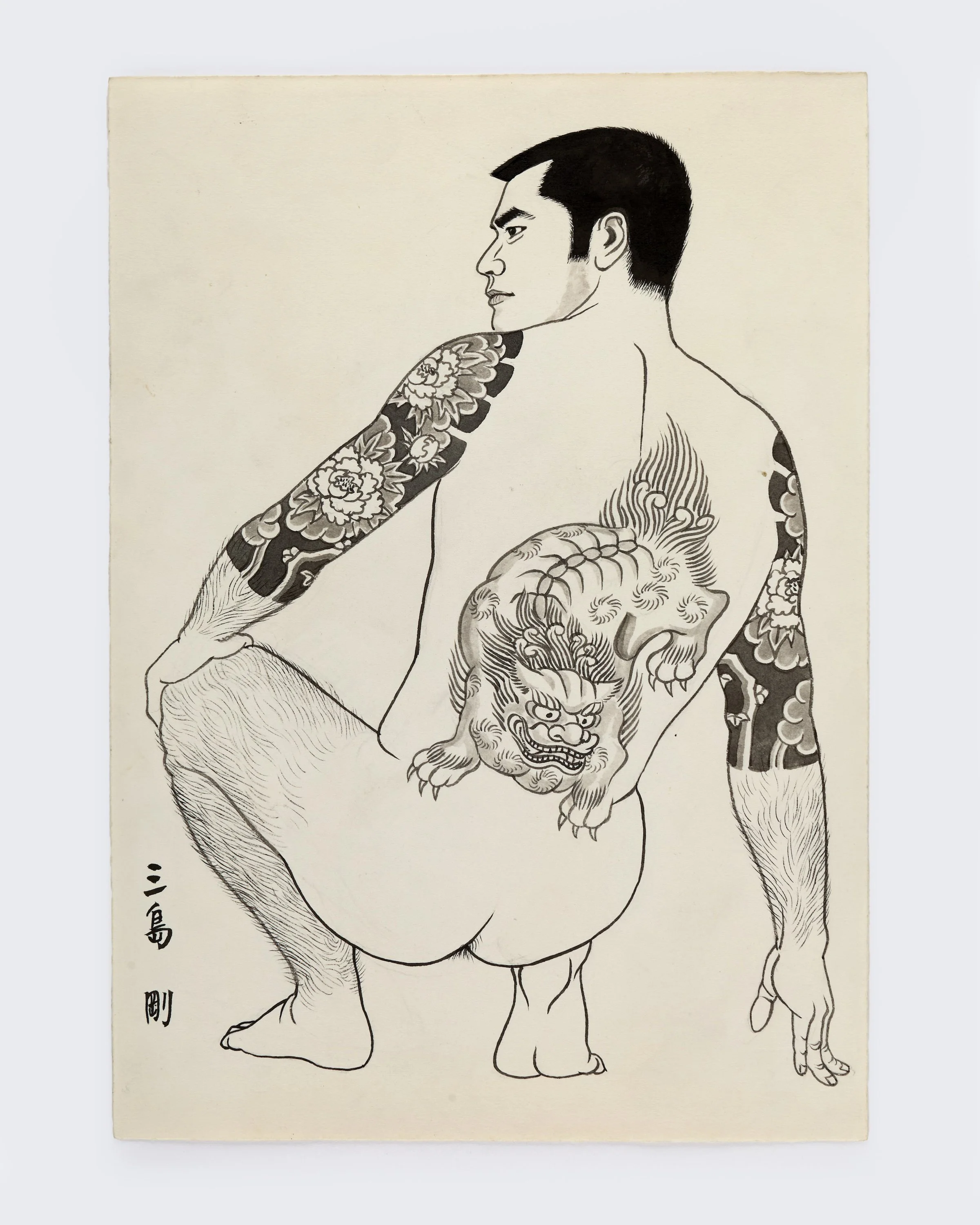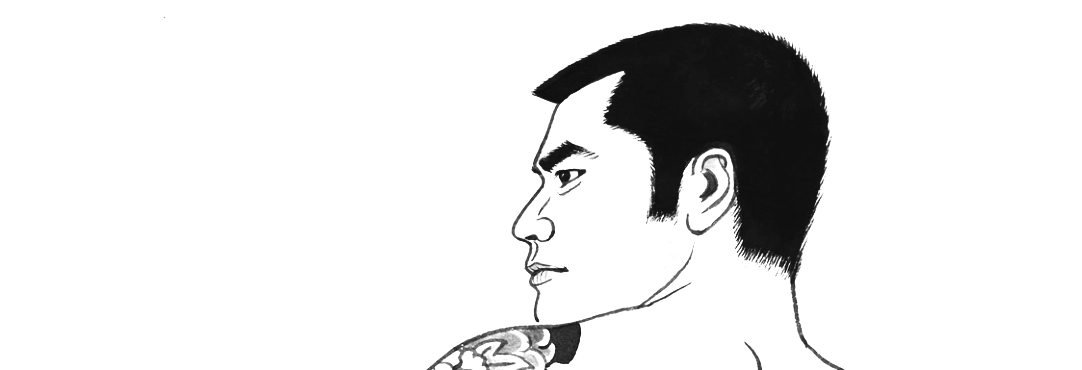GO MISHIMA: MASCULINITY + EROTICISIM
NOTE: the following article is NSFW and includes images of sex and nudity.
Lot 2 in AFTER DARK/AUTUMN Go Mishima (Tsuyoshi Yoshida) (Japanese, 1924 - 1988). Ink on paper.
By Gwen Morris
Tsuyoshi Yoshida assumed his pseudonym “Go Mishima” after his friend, the infamous Yukio Mishima (1925 - 1970), who committed ritual suicide publicly after a failed attempted coup. Yukio Mishima, being a renowned poet as well as a nationalist political leader, had encouraged Yoshida to pursue his erotic illustrations depicting traditionally masculine Japanese men, in line with Mishima's unique traditionalist-nationalistic views. A key figure in the earliest gay centered publications in Japan in the 1970s, Go Mishima's artwork filled the early issues of Barazoku and eventually Sabu, both publications becoming pioneers in gay male aesthetics in Japan.
Yoshida, and his contemporaries Go Hirano and Sadao Hasegawa, came to define the aesthetic of Japanese homoerotic art and future gay manga, by depicting masculine figures with thick body hair, toned musculature and cropped haircuts. Yoshida in particular focused on yakuza-styled figures with heavy tattooing (a culturally taboo practice in modern Japan due to the association with organized crime).
A vintage photograph of Yakuza members.
Yoshida's work also draws clear inspiration from erotic shunga ukiyo-e prints, a popular genre in the 18th and 19th centuries’ thriving Japanese print industry. The sinuous line, vibrant passages of color and heavy areas of black displayed in Yoshida’s work, clearly harkens to earlier Japanese erotic artists, and have a distinctly timeless feel.
‘Chinpen shinkeibai’ translated as “The Pillowed Boudoir” from the 1838 shunga series by Utagawa Kuniyoshi. Source: the Shunga Gallery Erotic Art Magazine.
Earlier homoerotic Japanese artwork, such as the above example of a shunga (erotic art) print border between the satirical and the expressly pornographic, typically depicting kabuki actors. Much like the pre-20th century European theatrical traditions, the roles of women in kabuki plays were often taken on by young men. The above woodblock from ‘Chinpen shinkeibai’ depicts an older wakashu and a yaro actor in women’s dress.
Much like Tom of Finland in the United States and Northern Europe, Yoshida can be credited with redefining the national image of the Japanese gay male towards an iconically hyper-masculine aesthetic, rejecting homophobic traditions of emasculating queer men. In works depicting couples by Yoshida, both men display similar aesthetics; toned, coarsely hairy, tattooed and often engaged in shibari and other domineering BDSM acts. Akin to his friend Yukio Mishima’s obsession with classical Japanese aesthetics and practices, Yoshida forgoes many of the Westernized elements of dress and presentation of a contemporary like Hasegawa’s work. Aside from the modern, militaristic buzzed haircuts, Yoshida's figures are most often in traditional undergarments.
Through defining this aesthetic, Yoshida constructs a distinctly Japanese form of 20th century out queerness. His work looked both forward and back, and in turn inspired aesthetics of the gay present and future, while staying grounded in the techniques and visualizations of the past.
Find the original Go Mishima ink drawing shown at the start of the blog in our AFTER DARK/AUTUMN auction catalog set for November 6th, 2025 at 7PM EST.




